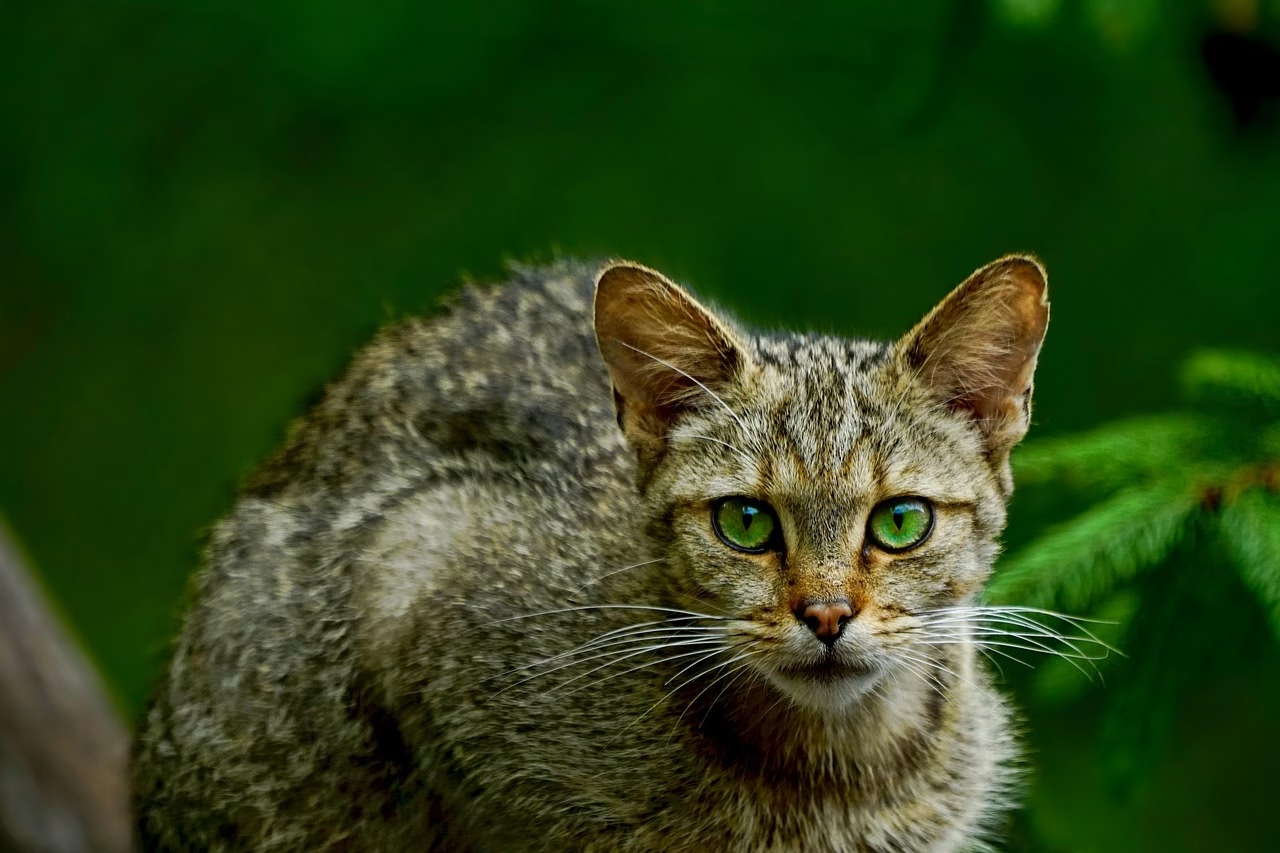For more than a hundred years, England’s forests have lacked one of their most elusive mammals: the wildcat. This small, muscular feline once moved quietly through the landscape, following narrow paths, dense shrubs, and hidden clearings. Then it disappeared. Habitat loss, persecution, and hybridisation pushed it further north until only Scotland held the last traces of the species.
Today, conservation groups hope to reintroduce the wildcat to the regions it once called home. If the project succeeds, England may once again hear the silent footsteps of a predator that vanished before modern generations could ever see it.
A Feline That Never Lived Like Its Domestic Look-Alikes
The European wildcat often surprises people because it resembles a strong tabby cat. Yet its behaviour and lifestyle differ completely.
Its body is thicker, its head broader, and its movements heavier and more deliberate. Unlike domestic cats, which adapt easily to human presence, wildcats remain cautious. They avoid open spaces, prefer twilight hours, and rely on solitude.
Seeing one in the wild feels rare even in places where it still survives. Its entire existence depends on staying unnoticed.
How England Lost Its Wildcat
The disappearance of the wildcat did not happen overnight. As forests shrank and farmland expanded, the species began losing the quiet areas it needed. Hunting pressure increased as people considered predators a threat to game species or livestock.
Hybridisation with domestic cats also played a major role. When wildcats crossbreed, their unique genetic identity becomes diluted. Over time, this mixture makes it harder for the species to maintain its distinct characteristics.
By the early 1900s, the English wildcat had faded out entirely.
Why Reintroduction Is Now Being Considered
The idea of bringing the wildcat back emerges from a new approach to nature. Instead of protecting only what remains, conservationists aim to rebuild what was lost.
Reintroduction requires healthy habitat, stable prey populations, and areas where human disturbance stays low. Some regions in England now offer precisely that.
If conditions hold and the plan receives final approval, young wildcats raised in controlled programs may step back into English landscapes. Their release would be gradual, monitored, and guided by experts who understand the challenges of reintroducing a solitary predator.
What a Return Could Mean for the Landscape
The wildcat is not a large predator, yet its presence shapes the ecosystem.
It controls small mammal populations naturally, influencing how vegetation grows and how other species behave. Its reappearance would not transform England overnight, but it would restore a piece of ecological history.
Even if most people never see a wildcat directly, knowing it moves somewhere in the forests adds a certain depth to the land. A place feels different when one of its original species quietly reclaims space.
A Species Stepping Back Into Its Story
The possible return of the British wildcat is not just about repairing the past. It represents a different way of seeing wildlife, one where absence is not accepted as permanent.
After more than a century, England may soon welcome back a mammal that once slipped away unnoticed.
If the project succeeds, the wildcat will continue its silent life, far from roads and houses, following the same patterns that shaped its ancestors. It will not roar, claim attention, or announce its comeback. It will simply return, step by step, as if finishing a journey paused too long.
Related:
- What Emotions Do Dogs Really Feel? A Natural Look at Their Instincts
- One of Beauval’s Stolen Monkeys Found in Slovakia: A Strange Wildlife Rescue
- Feeding the Winter King: 5 Essential Foods for Backyard Squirrels
- Why Dogs Tilt Their Head: Acoustic Targeting From Wolves
- Penguins That Mate for Life: Myths and Truths About Loyalty in the Cold


